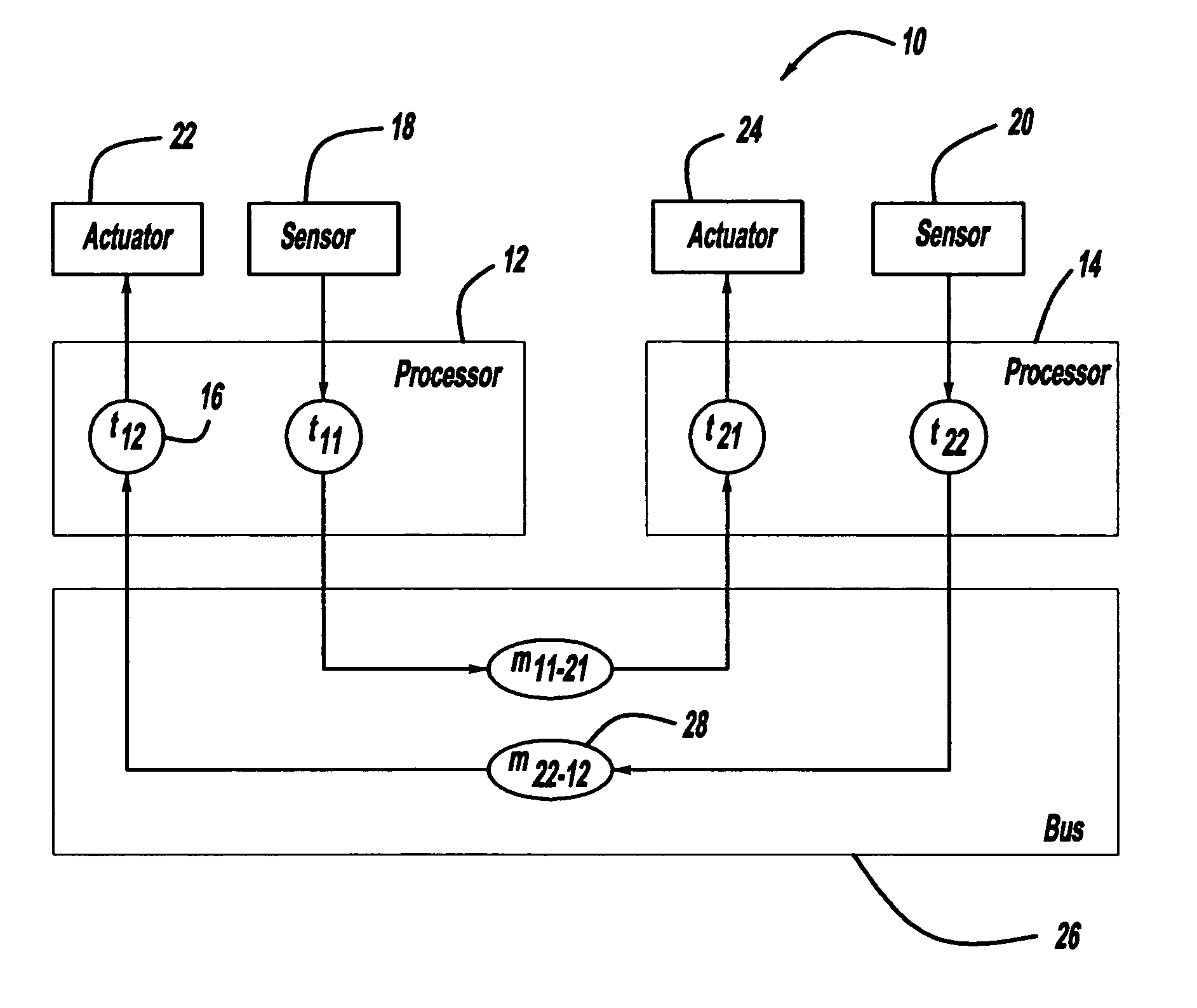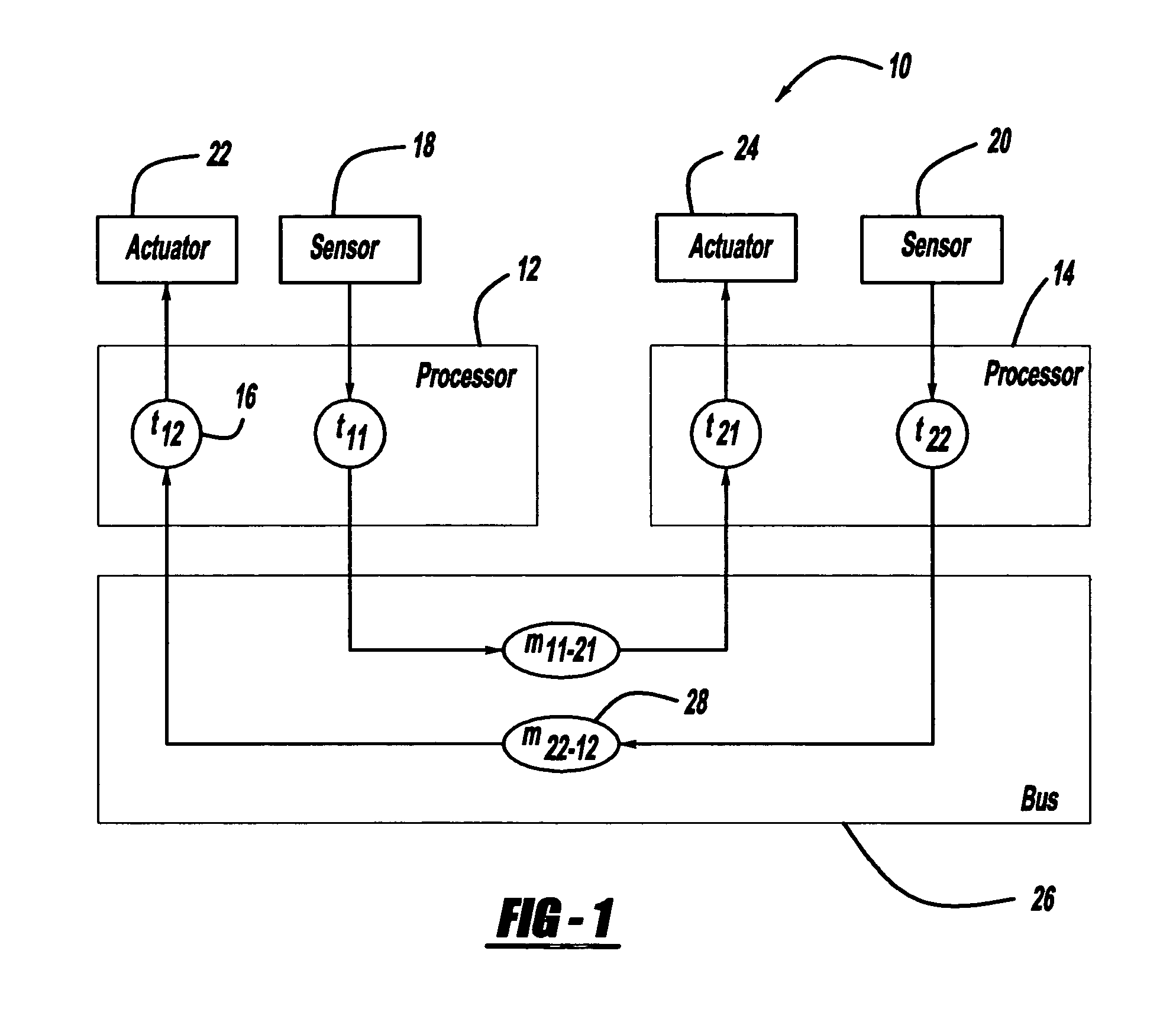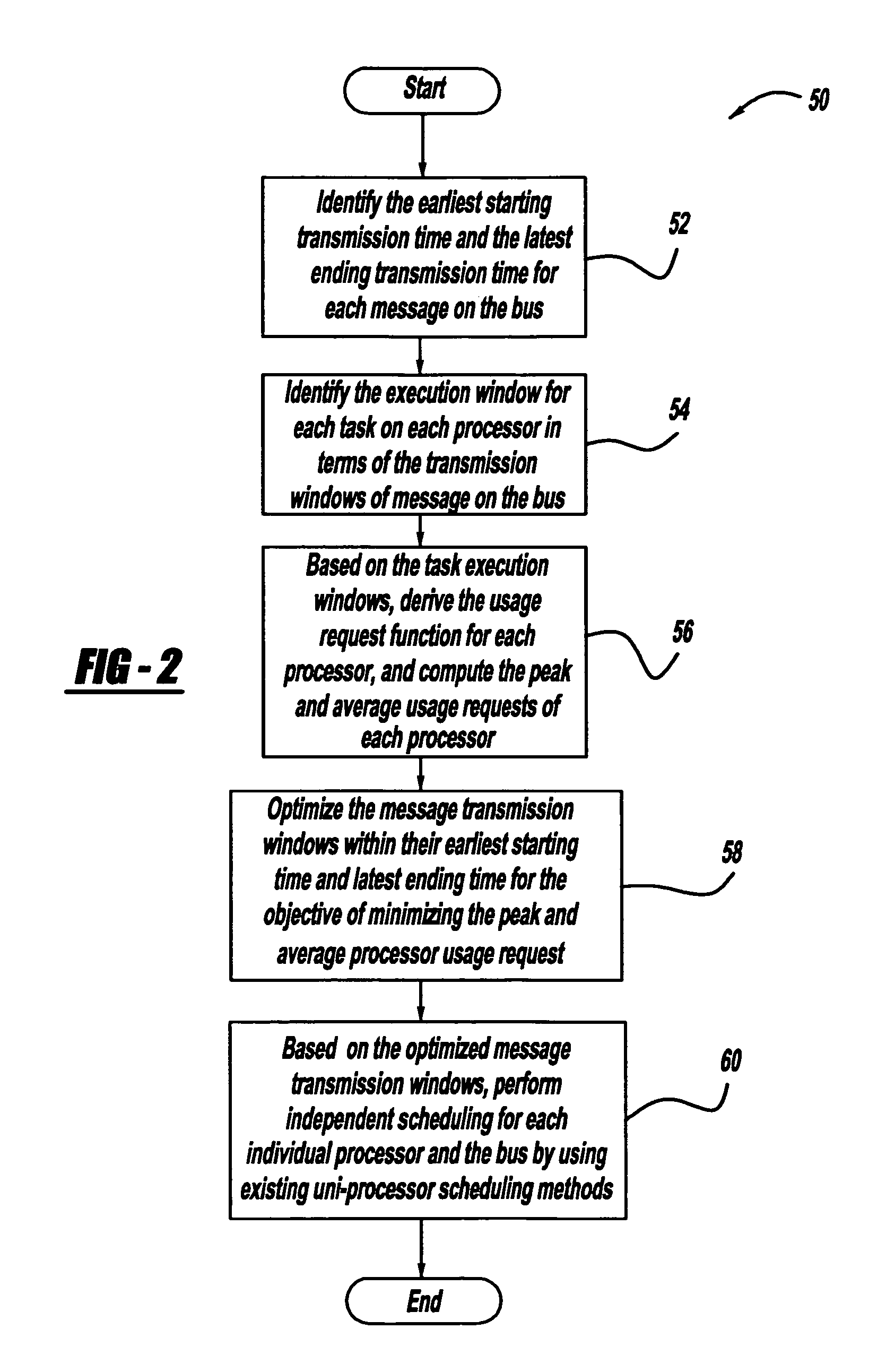Extensible scheduling of tasks in time-triggered distributed embedded systems
a distributed embedded system and task scheduling technology, applied in data switching networks, multi-programming arrangements, instruments, etc., can solve the problems of pre-existing constraints and the necessity of re-programming the bus schedule at great expense, and achieve the effect of making the scheduling even more accommodating
- Summary
- Abstract
- Description
- Claims
- Application Information
AI Technical Summary
Benefits of technology
Problems solved by technology
Method used
Image
Examples
Embodiment Construction
[0014]The following discussion of the embodiments of the invention directed to a process for scheduling processor tasks and message transmissions on a communications bus in an embedded system to increase system schedulability and extensibility is merely exemplary in nature, and is in no way intended to the limit the invention or its applications or uses.
[0015]FIG. 1 is a plan view of an embedded system 10 of the type discussed above that includes a plurality of processors 12 and 14 that are programmed to perform a plurality of tasks 16. In one example, each processor 12 and 14 receives signals from an appropriate sensor 18 and 20, respectively, for a particular application. Additionally, the processors 12 and 14 control an actuator 22 and 24, respectively, for the particular application. The results of the various tasks 16 executed by the processors 12 and 14 are transmitted between the processors 12 and 14 on a time-triggered communications bus 26 as messages 28.
[0016]In this examp...
PUM
 Login to View More
Login to View More Abstract
Description
Claims
Application Information
 Login to View More
Login to View More - R&D
- Intellectual Property
- Life Sciences
- Materials
- Tech Scout
- Unparalleled Data Quality
- Higher Quality Content
- 60% Fewer Hallucinations
Browse by: Latest US Patents, China's latest patents, Technical Efficacy Thesaurus, Application Domain, Technology Topic, Popular Technical Reports.
© 2025 PatSnap. All rights reserved.Legal|Privacy policy|Modern Slavery Act Transparency Statement|Sitemap|About US| Contact US: help@patsnap.com



